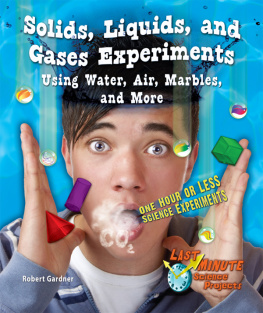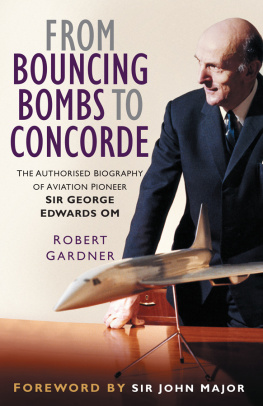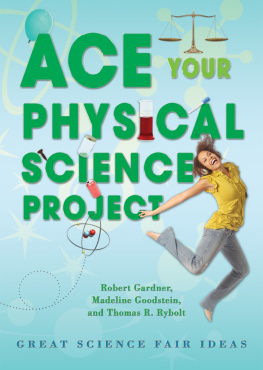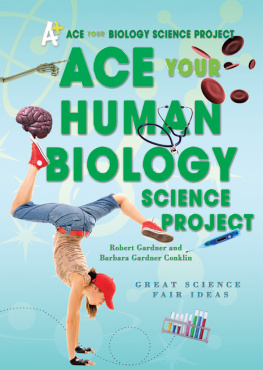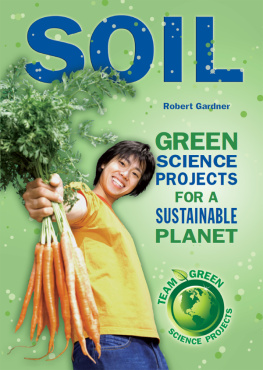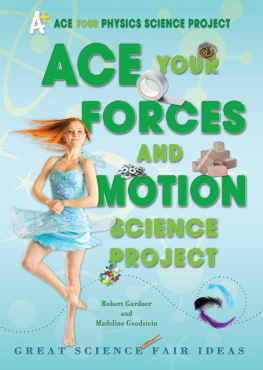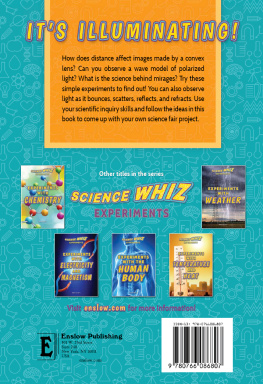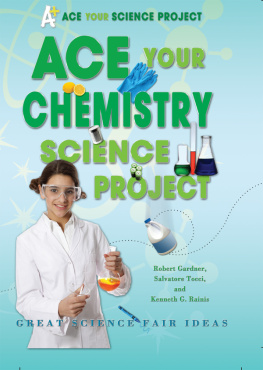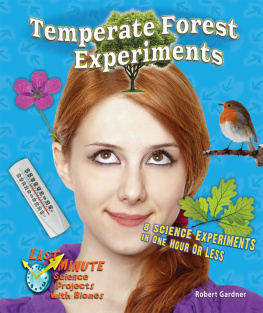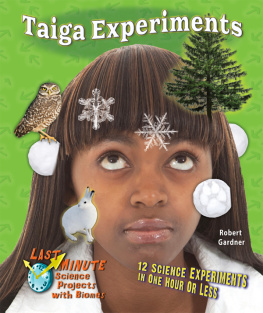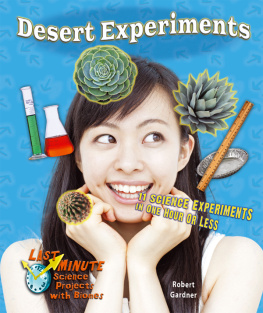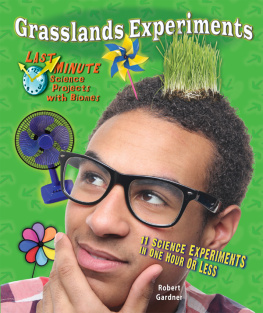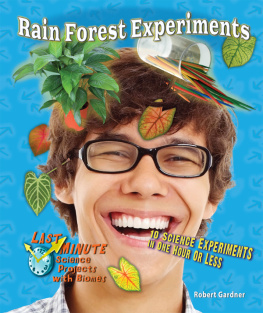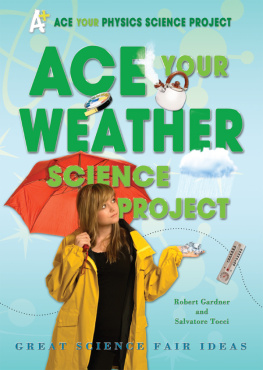Need a Solid Science Project?
Have you waited until the last minute to start your science project? Don't worry, award-winning author Robert Gardner has you covered! Each experiment in this book follows the scientific method, and can be completed in an hour or less. Most experiments also include ideas for science fair projects, in case you have more time than you originally thought!
"This creative book tackles tough science concepts that are important for students to learn in a simplified and meaningful way."
Mary Poulson, PhD, Science Consultant
Biologist
Central Washington University
Ellensburg, Washington
About the Author
Robert Gardner is an award-winning author of science books for young people. He is a retired high school teacher of physics, chemistry, and physical science. In 2010, he received the Lifetime Achievement Award in Hands-On Science Writing from AAAS/Subaru Science Books & Films.

Do you have a science project due tomorrow and youve put it off until now? This book provides a solution! Here you will find experiments with solids, liquids, and gases that you can do in one hour or less. In fact, some of them can be done in 30 minutes, others in 15 minutes, and some in as little as 5 minutes. Even if you have plenty of time to prepare for your next science project or science fair, or are just looking for some fun science experiments, you can enjoy this book, too.
Most of the experiments are followed by a Keep Exploring section. There you will find ideas for projects or experiments in which the details are left to you. You can design and carry out your own experiments, under adult supervision, when you have more time.
Sometimes you may need a partner. Work with someone who likes to experiment as much as you do so you will both have fun. Please follow any safety warnings and work with an adult when it is suggested.
This is a book about the three states of mattersolids, liquids, and gases. Scientists define matter as anything that has mass and occupies space. Mass is anything that resists motion. A mass at rest will not move unless a force acts on it. When a force does act on it, the mass accelerates. If there is no friction, the mass is equal to the force divided by the acceleration (mass = force/acceleration). The mass of a sample of matter can easily be measured on a balance. Small masses are measured in grams, large masses in kilograms.
Different sciences use different ways of experimenting. Depending on the problem, one method is likely to be better than another. Designing a new medicine for heart disease and finding evidence of water on Mars require different experiments.
Even with these differences, most scientists use the scientific method. This includes: making an observation, coming up with a question, making a hypothesis (a possible answer to the question) and a prediction (an if-then statement), designing and conducting an experiment, analyzing results, drawing conclusions, and deciding if the hypothesis is true or false. Scientists share their results. They publish articles in science journals.
Once you have a question, you can make a hypothesis. Your hypothesis is a possible answer to the question (what you think will happen). For example, you might hypothesize that a gas will expand when heated. Then you test your hypothesis.
In most cases you should do a controlled experiment. This means having two groups that are treated the same except for the thing being tested. That thing is called a variable. For example, you might have two identical air-filled balloons. After measuring the volume of the balloons, you would place one balloon in a warm environment for a few minutes. You would then measure the volume of both balloons again. If the volume of the balloon in the warmer environment had increased while the volume of the other balloon was unchanged, you would conclude that your hypothesis is true.
The results of one experiment often lead to another question. Or they may send you off in another direction. Whatever the results, something can be learned from every experiment!
All of the investigations in this book contain ideas that might lead you to a science fair project. However, judges at science fairs do not reward projects or experiments that are simply copied from a book. For example, a diagram of a steam engine would not impress most judges; however, a balance made from a soda straw that could weigh the wing of a fly would attract their attention.
Science fair judges tend to reward creative thought and imagination. It is difficult to be creative or imaginative unless you are really interested in your project. Therefore, try to choose an investigation that excites you. And before you jump into a project, consider, too, your own talents and the cost of the materials you will need.
If you decide to use an experiment or idea found in this book for a science fair, find ways to modify or extend it. This should not be difficult. As you do investigations, you will get new ideas. You will think of questions that experiments can answer. The experiments will make great science fair projects because the ideas are your own and are interesting to you.
Your notebook, as any scientist will tell you, is a valuable possession. It should contain ideas you may have as you experiment, sketches you may draw, calculations you make, and hypotheses you may suggest. It should include a description of every experiment you do as well as the data you record (such as voltages, currents, resistors, weights, and so on). It should also contain the results of your experiments, graphs you draw, and any conclusions you may be able to reach based on your results.
- Do any experiments or projects, whether from this book or of your own design, under the supervision of a science teacher or other knowledgeable adult.
- Read all instructions carefully before proceeding with a project. If you have questions, check with your supervisor before going any further.
- Always wear safety goggles when doing experiments that could cause particles to enter your eyes. Tie back long hair. Do not wear sandals.
- Do not eat or drink while experimenting. Never taste substances being used (unless instructed to do so).
- Do not touch chemicals, and do not let water drops fall on a hot lightbulb.
- The liquid in some thermometers is mercury (a dense liquid metal). It is dangerous to touch mercury or breathe mercury vapor. Therefore, mercury thermometers have been banned in many states. In these experiments, use only non-mercury thermometers, such as those filled with alcohol. If you have a mercury thermometer, ask an adult if it can be taken to a local thermometer exchange location.
- Do only those experiments that are described in the book or those that have been approved by an adult.
- Maintain a serious attitude while conducting experiments. Never engage in horseplay or play practical jokes.
- Remove all items not needed for the experiment from your work space.
- At the end of every activity, clean all materials used and put them away. Then wash your hands thoroughly with soap and water.

Here are experiments involving one or more of the three states of matter that you can do in one hour or less. You dont have any time to lose, so lets get started!
Lets examine the three states of matter.

